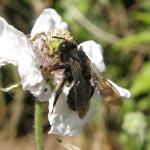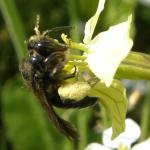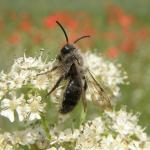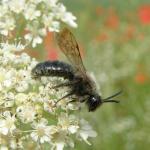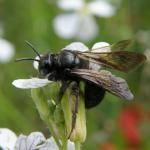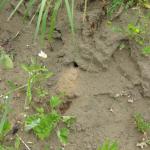This species is the rarer of the two formerly known as A. pilipes or A. carbonaria. It has a single flight period which occurs in May and June between the two broods of A. pilipes sens. str. Andrena nigrospina has shown a very marked decline in distribution since the mid 20th century, although quantifying this is very difficult as many of the records do not now have specimens to back them up and so cannot be re-examined. Examination of male genitalia is necessary for determination, and specimens flying in June are thought most likely to be this species,
Central and southern England, with modern records coming from Surrey, Staffordshire and Worcestershire.
It is widely distributed in Central Europe.
As the split in the two species post-dates both the Red Data Book (Shirt, 1987) and the Review (Falk, 1991) this species is not currently listed. It is clear, however, that its status should be reviewed.
There is possibly some association with sandy areas.
May to June.
Nests in aggregations in bare soil at the Staffordshire locality (G Trevis, pers. comm.). Elsewhere in Europe it has been reported as nesting singly.
In Surrey this species has been found visiting flowers of hoary mustard, rape and groundelder (Baldock, 2008) and G Knight (pers. comm.) found males flying around flowering broom in Staffordshire.
A very dark and structurally distinct form of what otherwise appears to be Nomada fulvicornis Fabricius has been identified as being associated with this species in the Staffordshire area (Falk, 2005).
2012


